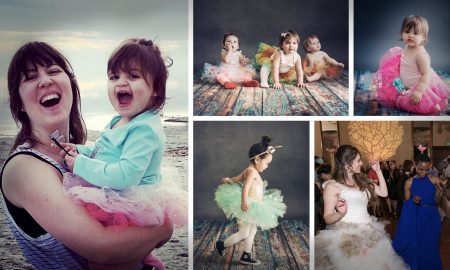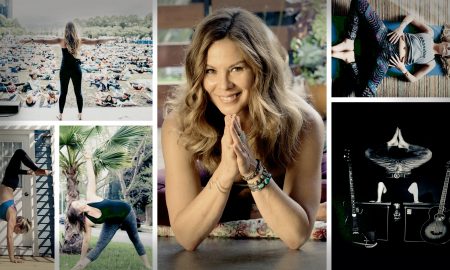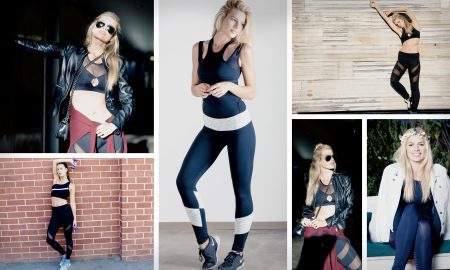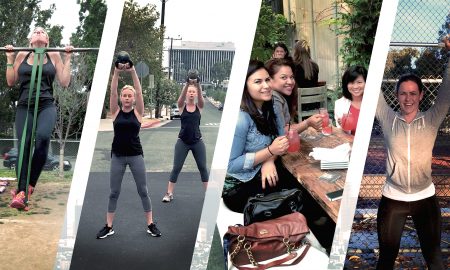

Today we’d like to introduce you to Chang Gao.
Hi Chang, we’re thrilled to have a chance to learn your story today. So, before we get into specifics, maybe you can briefly walk us through how you got to where you are today?
My story starts with two things: a stack of old matchbox collections and a TV perpetually tuned to Tom & Jerry. As a kid, I’d sketch cartoon characters on the backs of my homework notebooks—tiny, chaotic worlds where Jerry always outsmarted Tom, and Goofy tripped over his own feet. I didn’t realize it then, but those scribbles were my first love letter to visual storytelling.
Fast-forward through a film production degree (yes, I once dreamed of directing the next *Pixar tearjerker*), a detour into arts management, and finally landing at ArtCenter for my MFA—where I learned that graphic design is basically *Tetris* for grown-ups: arranging shapes, colors, and words until everything *clicks*.
A significant thread in my story is my relationship with sound—or the lack of it. Since age two, I’ve navigated the world with no sound, until get a hearing aid at age 4 and a cochlear implant at age 26. Design has now become my way of “listening.” Typography’s rhythm, color’s cadence, and negative space’s silence all speak vividly to me. This duality sharpens my focus: I see tension in asymmetry and harmony in contrasts, much like composing a visual symphony where every element has its pitch.
Professionally, I’ve thrived in the intersection of structure and spontaneity. As part of a marketing studio, I built brand worlds from scratch—logos, websites, even presentations that clients actually *enjoyed* sitting through. Later, as a freelancer, I embraced the experimental: blending AI-generated visuals with hand-drawn 2D animation for a pop artist’s concert tour. The project fused algorithmic unpredictability with the tactile warmth of traditional animation—mirroring how I balance technology and humanity in my work.
One of my most formative chapters was producing documentaries for global networks like National Geographic and Discovery before I settled down in design. Scouting remote Himalayan villages or editing footage of communities navigating adversity, I learned that the real heroes aren’t on screens—they’re ordinary people facing extraordinary challenges with quiet courage. Listening to their stories taught me the power of humanity. These encounters shaped my belief that design, like documentary work, must honor human resilience. It’s why I approach every project as a collaborator, not just a creator: to amplify voices, not overshadow them.
Looking back, every step—from producing documentaries in the Himalayas to designing brands that stick—has been about bridging worlds: analog and digital, silence and sound, discipline and play. Today, I’m still that kid with a matchbox—only now, the canvas is bigger. I’m fueled by the belief that creativity thrives in the unexpected. Even in silence, there’s a whole lot to say.
I’m sure it wasn’t obstacle-free, but would you say the journey has been fairly smooth so far?
Smooth roads make for boring stories, don’t they? My path has been more of a winding trail with switchbacks. Growing up with a hearing disability meant I often felt like I was translating the world in real time (like news captions are often delayed). In design meetings or on film sets, I’d focus intensely on lip-reading, visual cues and assistance of captions, which could be exhausting. There were moments I doubted whether I belonged in collaborative, fast-paced fields where communication is everything. But those challenges taught me to communicate proactively—to ask questions, clarify intent, and lean into visual tools like sketches and moodboards to bridge gaps.
Transitioning from film production to graphic design was less a detour and more a return to roots. While I loved storytelling through film, I craved the precision of visual systems—the kind of structured creativity that reignited my childhood love for sketching. Moving from Beijing to Washington to Pasadena added layers of cultural adaptation, but it also reminded me that design, at its core, is a universal language. Rediscovering that joy in grids, typography, motion and color felt like coming home.
As you know, we’re big fans of you and your work. For our readers who might not be as familiar what can you tell them about what you do?
I am a visual designer who bridges the gap between storytelling and systems. My work spans brand identity, motion design, and experiential visuals, with a focus on crafting narratives that feel both meticulously structured and deeply human. I specialize in translating complex ideas into cohesive visual languages—whether through typography that dances, color palettes that whisper nostalgia, or motions that pulse with rhythm.
What sets my work apart is a lens shaped by duality: growing up with a hearing disability taught me to “listen” through color and composition, while my multidisciplinary journey—from film production to graphic design—fuels my ability to merge analog warmth with digital precision. I’m known for projects that celebrate quiet resilience, like documentaries highlighting ordinary heroes or concert visuals that blend hand-drawn textures with modern fluidity.
Recognition such as the Young Ones Award and TDC Typographic Excellence honor has been humbling, but my true pride lies in designs that resonate emotionally. Whether channeling Hayao Miyazaki’s environmental wonder or the sun-bleached hues of ’90s anime, I aim to create work that invites people to *look closer*—to find magic in the margins and courage in the everyday.
At my core, I’m a designer who believes in the power of empathy over ego. My design isn’t just about aesthetics—it’s about building bridges, one pixel (or pencil sketch) at a time.
What’s next?
I’m working on building In the Back Pocket, a stationery and lifestyle brand that turns my doodles—quirky monsters, typographic daydreams—into joyful, usable art. Think notebooks with misprinted margins, enamel pins of anxious yet adorable creatures, and tote bags that ask, “Did you water your existential dread today?”
Beyond products, I’m itching to collaborate with indie filmmakers on title sequences—I am a huge movie fan and always love watching the titles and credits for typographic joy.
Contact Info:
- Website: https://changgao.design/
- Instagram: https://www.instagram.com/_chang.gao/
- LinkedIn: https://www.linkedin.com/in/changgaodesign/






Image Credits
First two photos: Lyka Gozon











